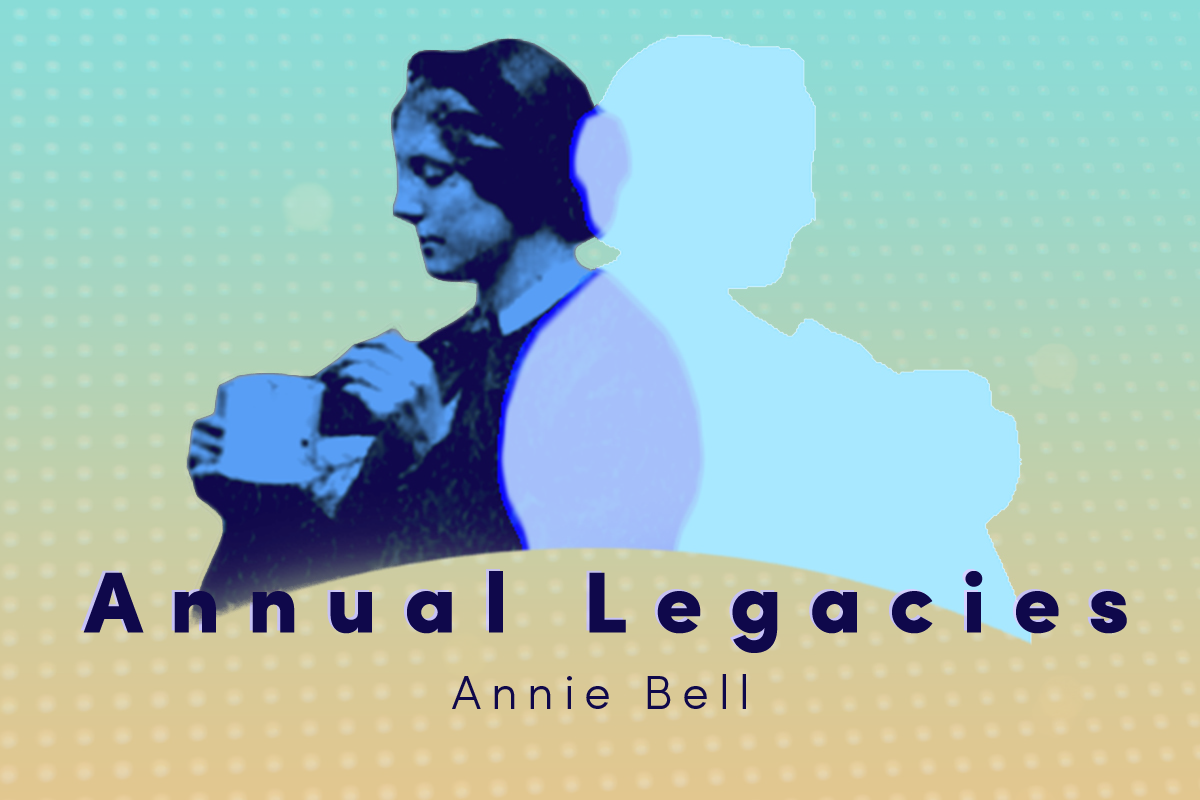Annie Bell was the central subject for one of the most popular photos used by the U.S. Sanitary Commission (USSC). The photo, along with others, was sold by the USSC to raise funds to support wounded and sick soldiers in the United States Army.
Bell was born April 9, 1839, in Blair County, Pennsylvania to Martin and Eliza Bell. Little is known about her youth until she went to the Female Seminary of the University of Lewisburg, now Bucknell University, and graduated in 1858.
After the Civil War broke out, she tended to wounded soldiers at the Battle of Antietam and served as a volunteer nurse at Harpers Ferry. In 1863, she began working as a paid nurse and later became chief matron, at the 12th Corps Hospital during the Battle of Gettysburg. Late that year, after Major General William S. Rosecran and his army suffered a major defeat at the Battle of Chickamauga, the 12th Corps was sent to Tennessee to serve as reinforcements during the subsequent Chattanooga Campaign. Annie followed, working in U.S. Hospitals #1 and #8 in Tennessee where she attended to soldiers who had fought in the Battle of Chickamauga, the Battle of Missionary Ridge, and others. She served as chief matron until she was discharged in May 1865. She went home to Blair County after the war, and married Dr. George Stubbs shortly after on September 14, 1865. They met while working together in Tennessee.

The photo of Annie Bell, dating from 1864, was sold as a carte de visite by the U.S. Sanitary Commission (USSC). The USSC was established by the U.S. Congress on June 18, 1861, after being started by a group of prominent New York women to raise private funds for sick and wounded soldiers of the United States Army. While in Tennessee, Bell was approached by USSC representatives to pose for the photo. A letter from Annie to her mother, Eliza, dated February 15, 1864, recounts, “Two weeks ago, some of the Sanitary Commission people came to see me and asked that I would allow an artist to take a hospital scene, that they wanted such a one to sell at the fair at Cleavland [sic].” The Northern Ohio Sanitary Fair opened in Cleveland on February 22 and raised $78,000.
As our society now looks to medical staff working tirelessly in hospitals around the world, so too did soldiers and their families during the American Civil War. The need of having someone to help us when we are sick or injured is something that resonates throughout time. And today, thanks to the digital age, we know the names of the frontline medical staff (and all essential workers) that have helped our families and friends, just as they are able to communicate their stories and hardships to us. They are already becoming part of our nation’s–and the world’s–history.
Today, we ask you to help ACWM to remember their legacies by donating to the Annual Legacy Campaign. Your funding is imperative to helping the museum preserve one of the largest collections of Civil War artifacts in the world and the stories that go along with them, as well as provide unparalleled educational resources for teachers, their students, and for you.
